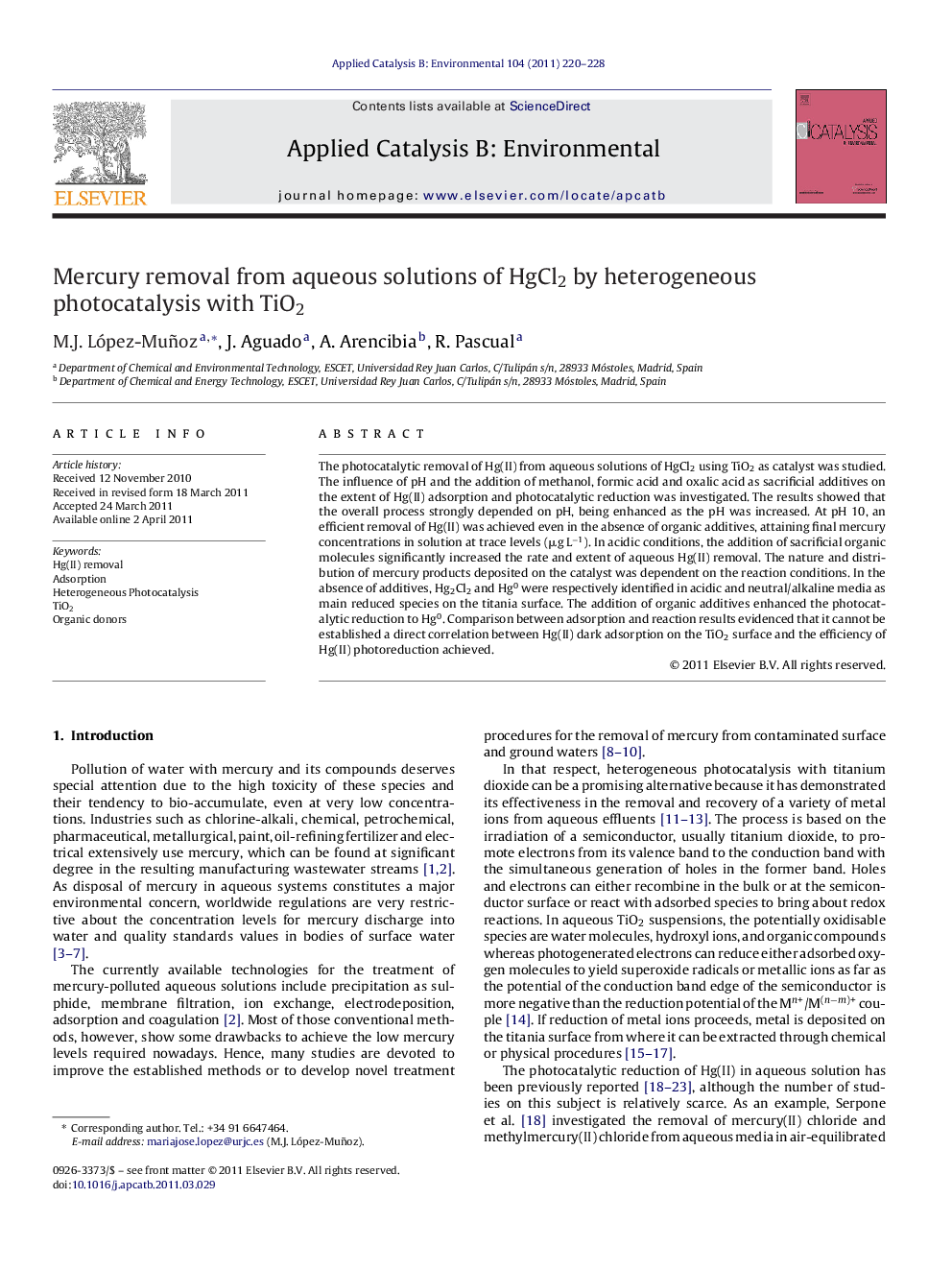| Article ID | Journal | Published Year | Pages | File Type |
|---|---|---|---|---|
| 46956 | Applied Catalysis B: Environmental | 2011 | 9 Pages |
The photocatalytic removal of Hg(II) from aqueous solutions of HgCl2 using TiO2 as catalyst was studied. The influence of pH and the addition of methanol, formic acid and oxalic acid as sacrificial additives on the extent of Hg(II) adsorption and photocatalytic reduction was investigated. The results showed that the overall process strongly depended on pH, being enhanced as the pH was increased. At pH 10, an efficient removal of Hg(II) was achieved even in the absence of organic additives, attaining final mercury concentrations in solution at trace levels (μg L−1). In acidic conditions, the addition of sacrificial organic molecules significantly increased the rate and extent of aqueous Hg(II) removal. The nature and distribution of mercury products deposited on the catalyst was dependent on the reaction conditions. In the absence of additives, Hg2Cl2 and Hg0 were respectively identified in acidic and neutral/alkaline media as main reduced species on the titania surface. The addition of organic additives enhanced the photocatalytic reduction to Hg0. Comparison between adsorption and reaction results evidenced that it cannot be established a direct correlation between Hg(II) dark adsorption on the TiO2 surface and the efficiency of Hg(II) photoreduction achieved.
Graphical abstractFigure optionsDownload full-size imageDownload as PowerPoint slideHighlights► We studied the scope of heterogeneous photocatalysis for treatment of aqueous Hg(II). ► From 100 mg L−1 HgCl2 solutions Hg values below 100 μg L−1 were attained. ► The efficiency of Hg uptake is controlled by pH and nature of organic donors. ► Mercury is deposited mainly as Hg(0) but also as Hg2Cl2 on theTiO2 surface. ► No direct correlation between Hg adsorption and photocatalytic reduction was found.
